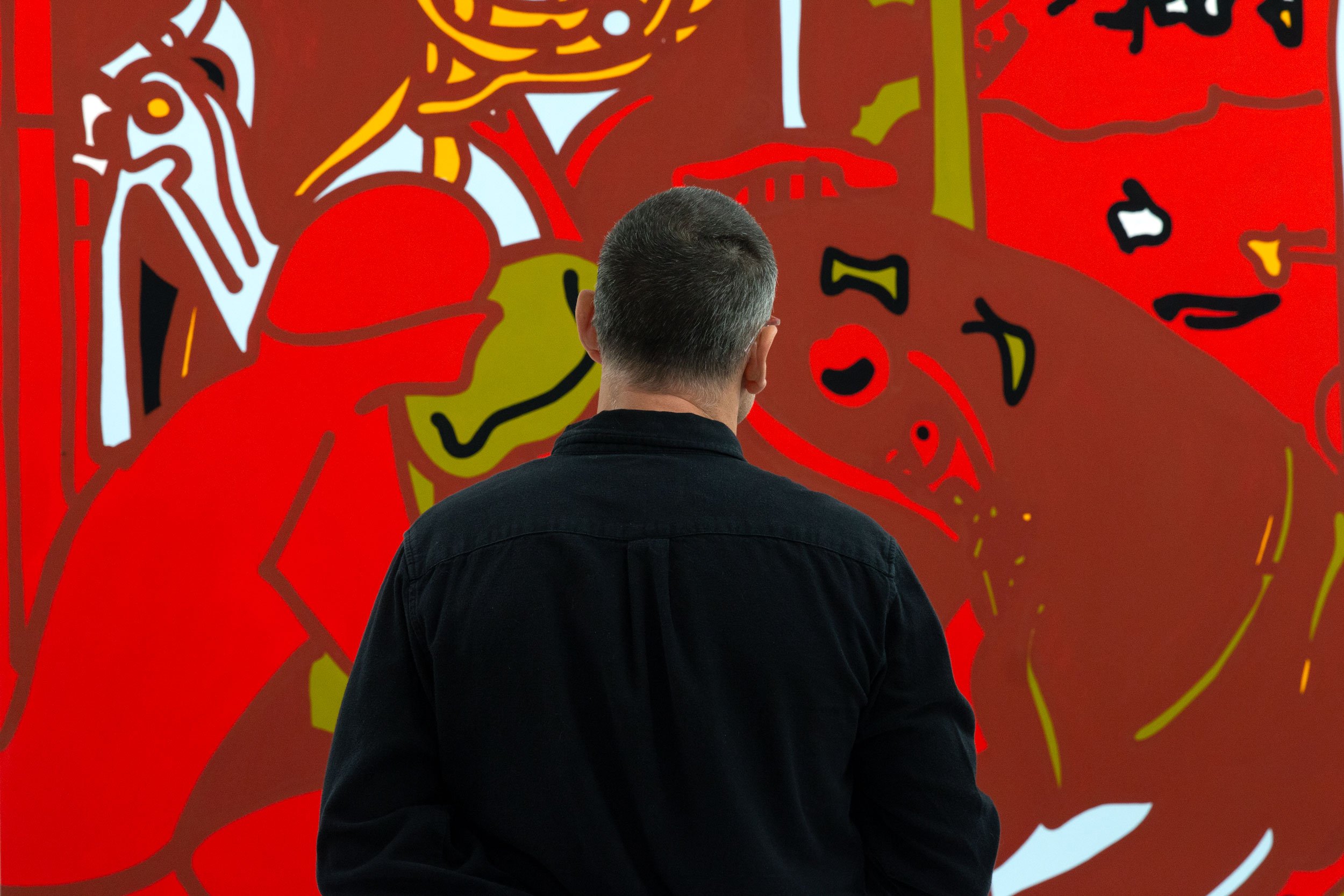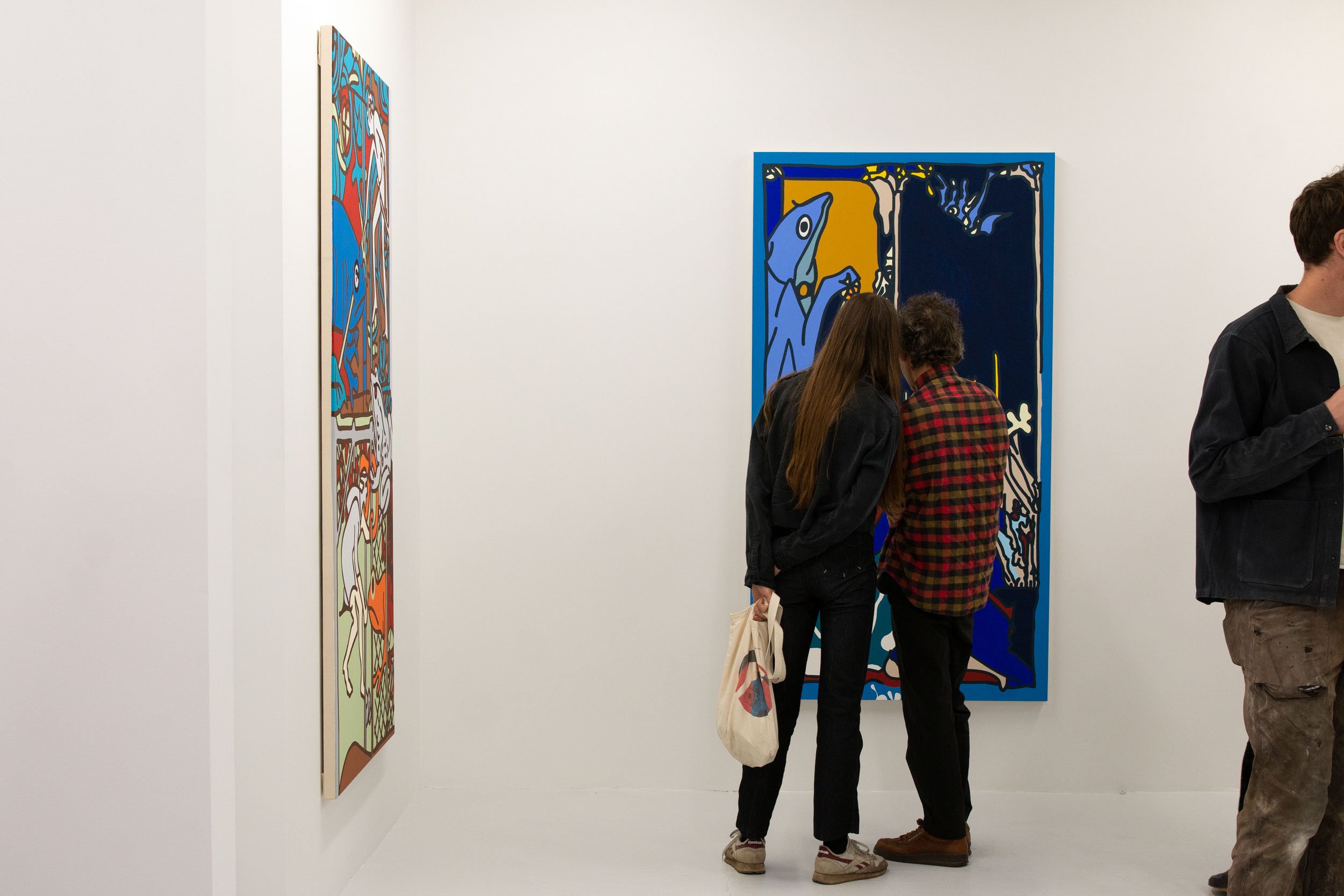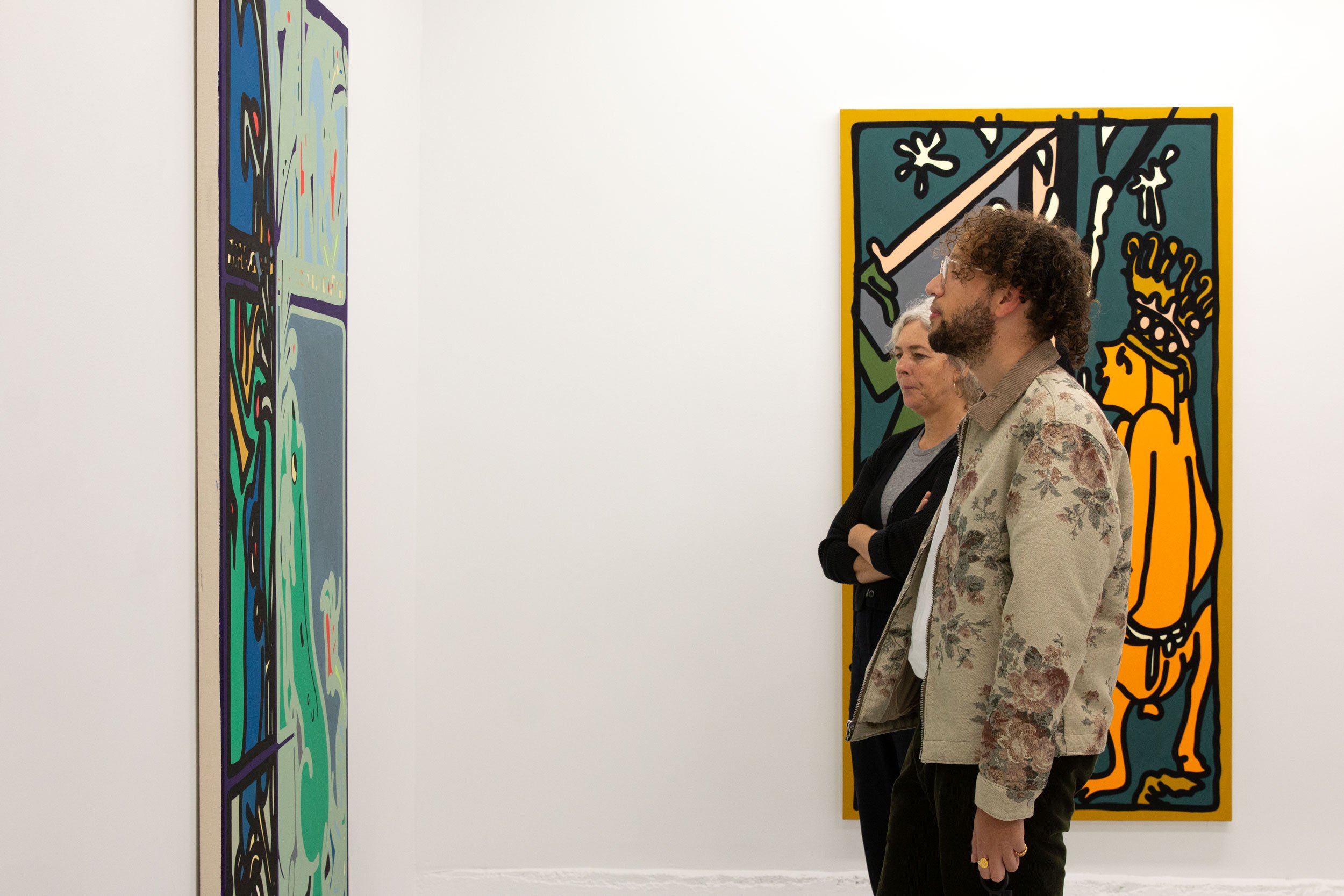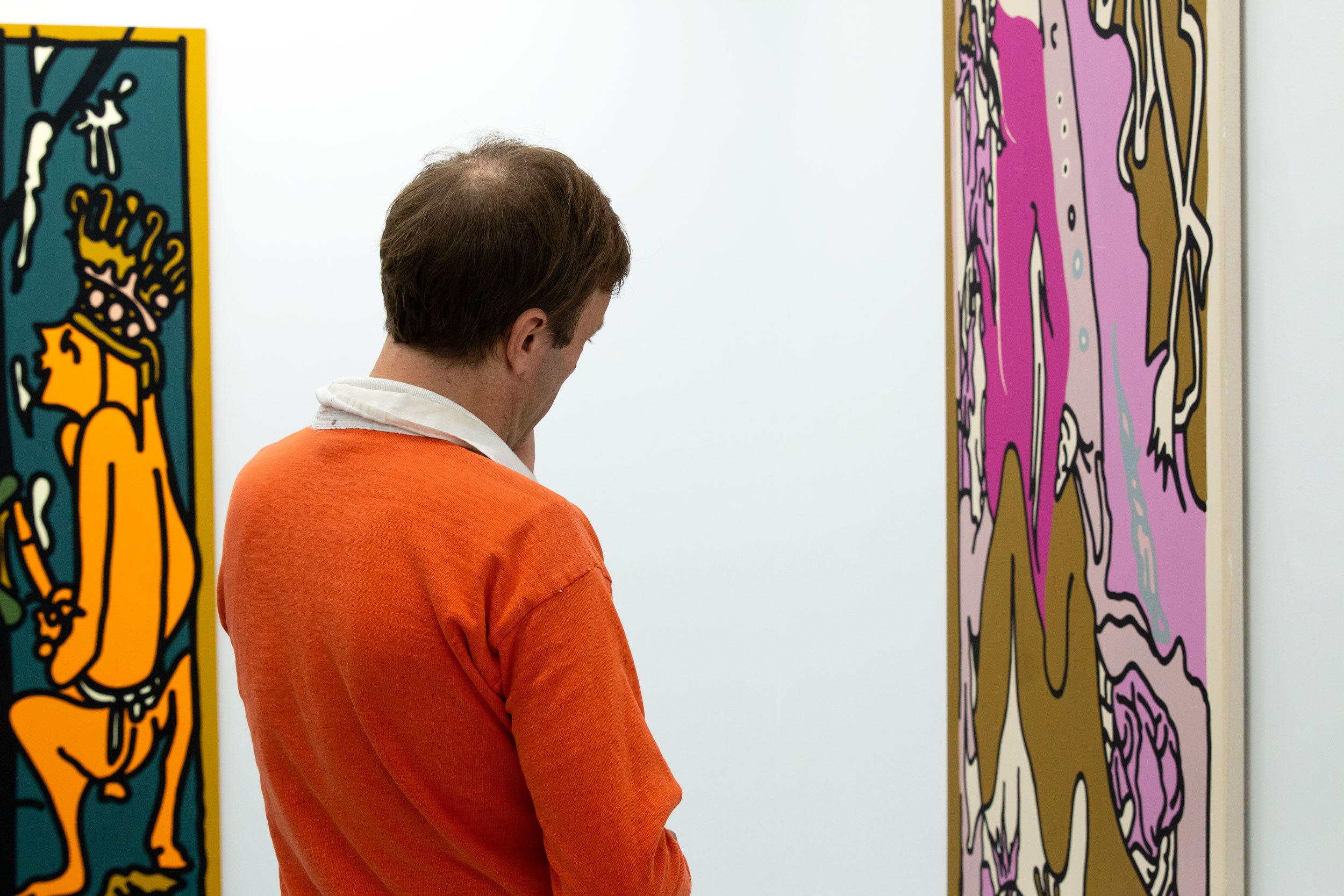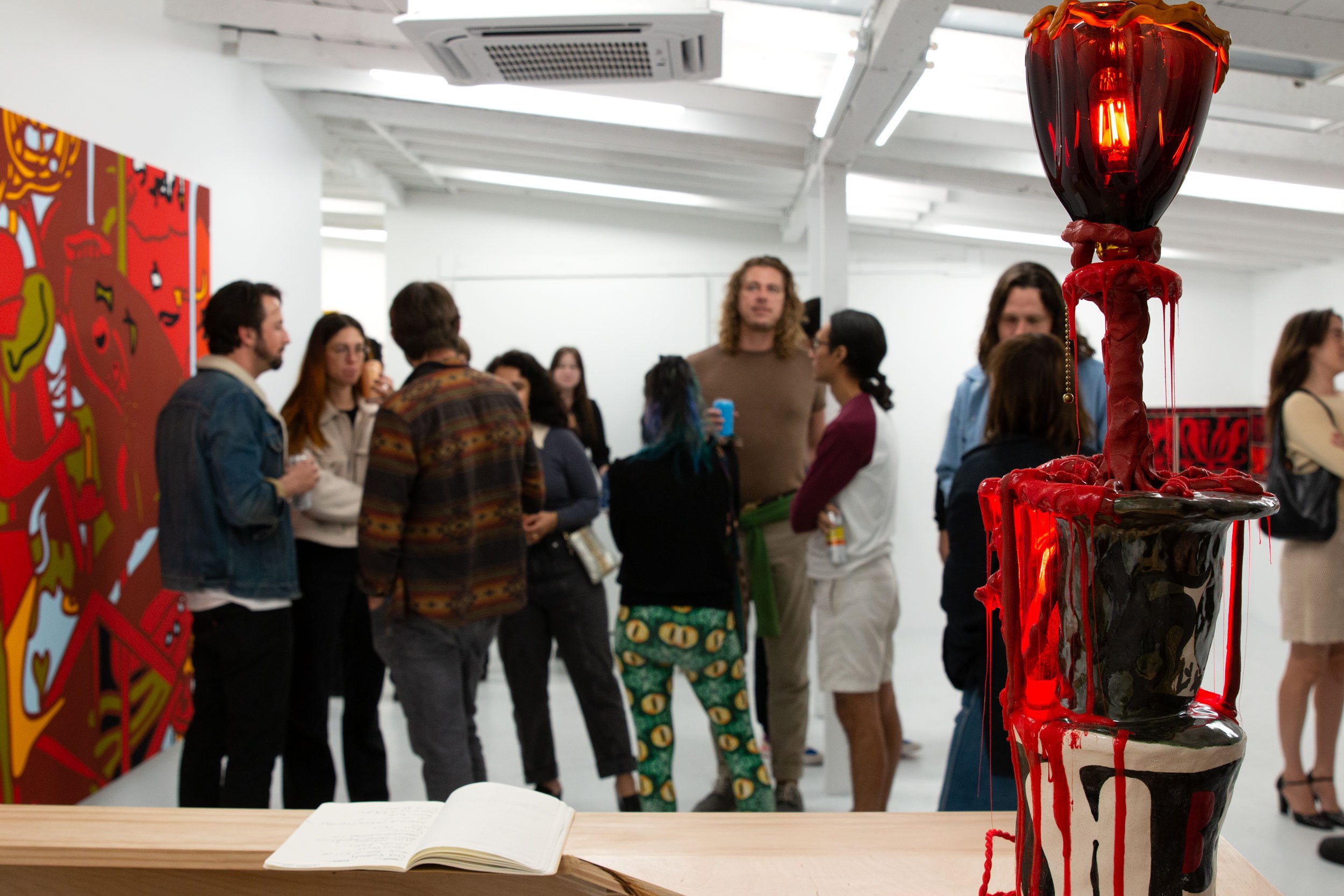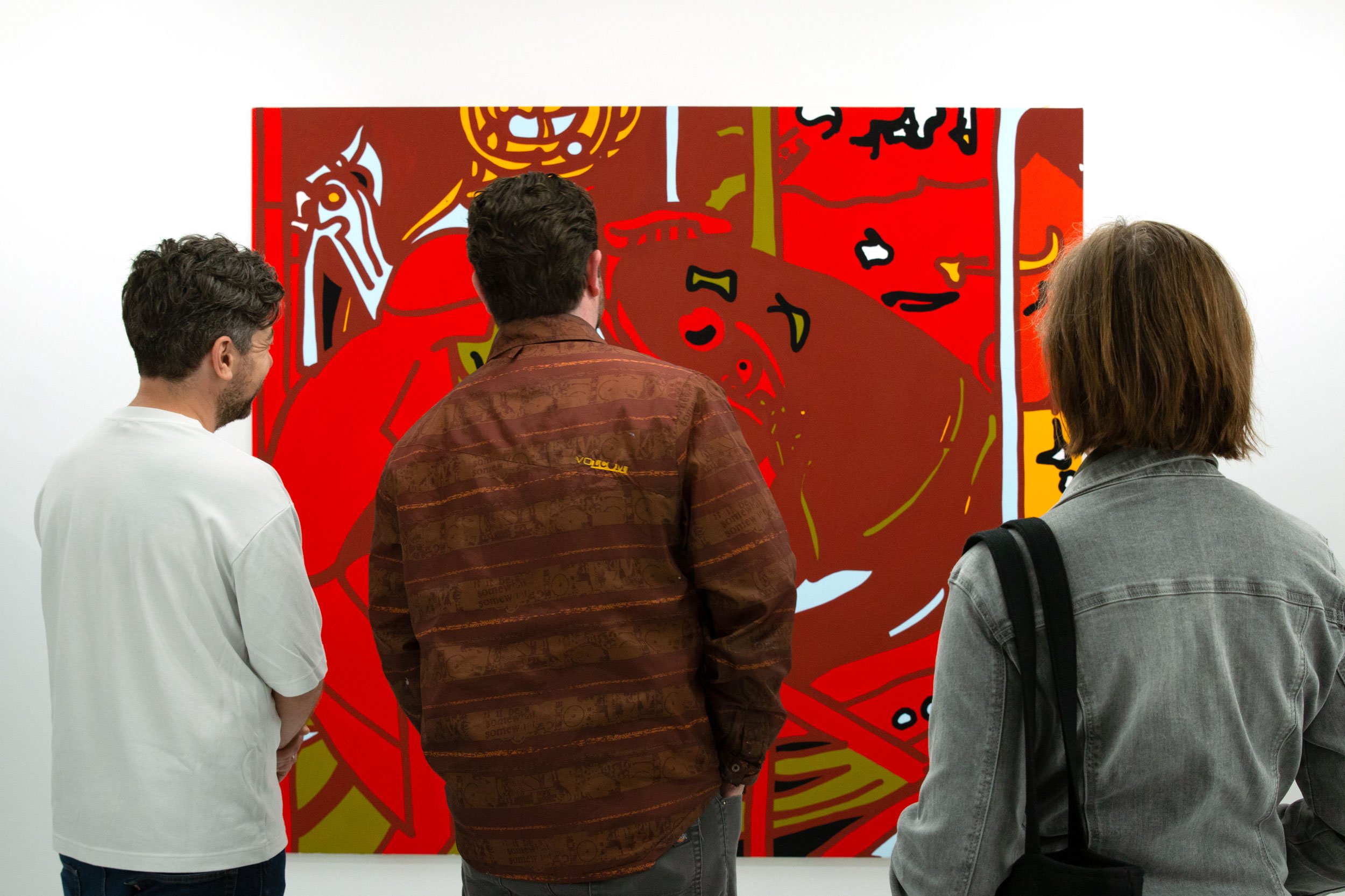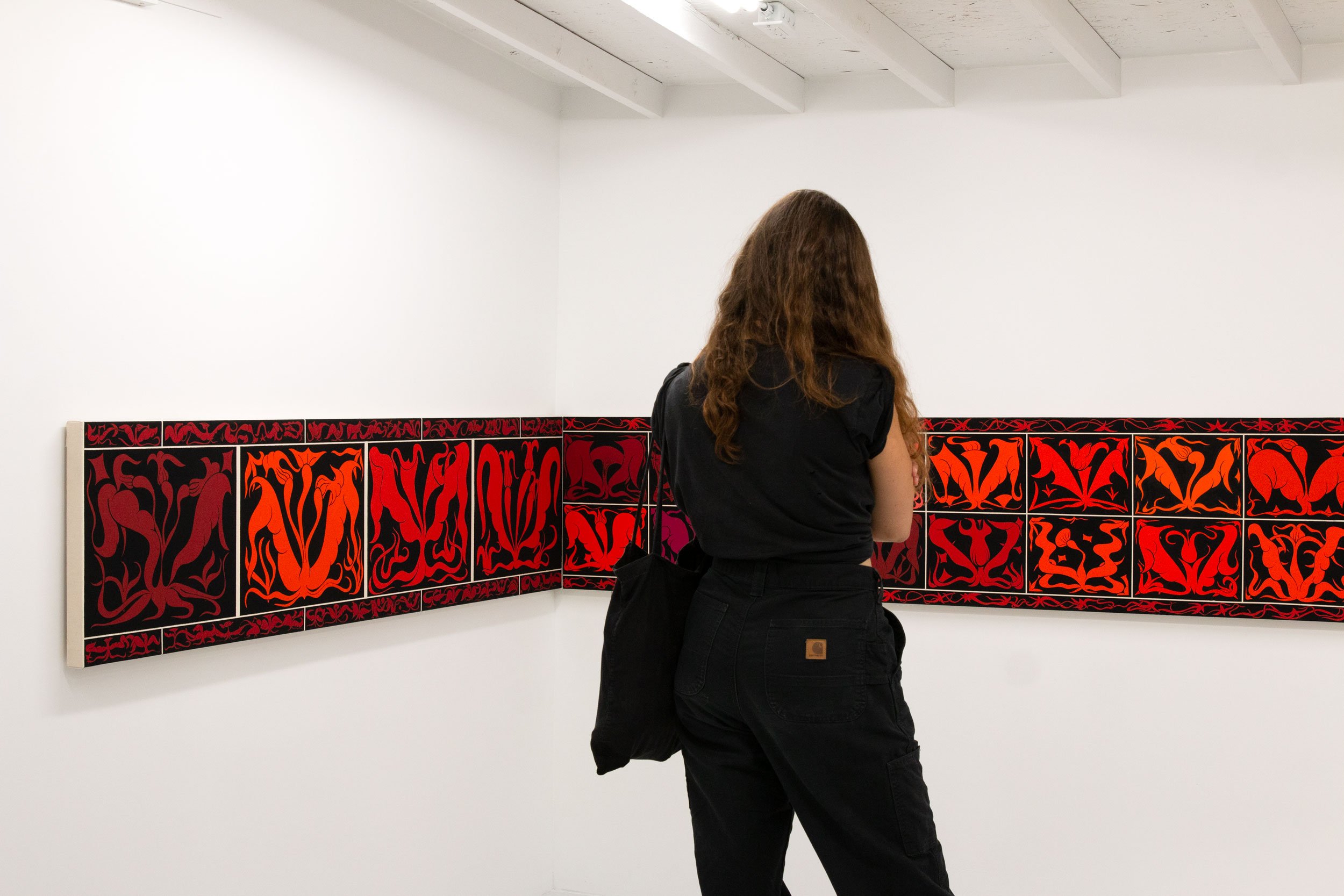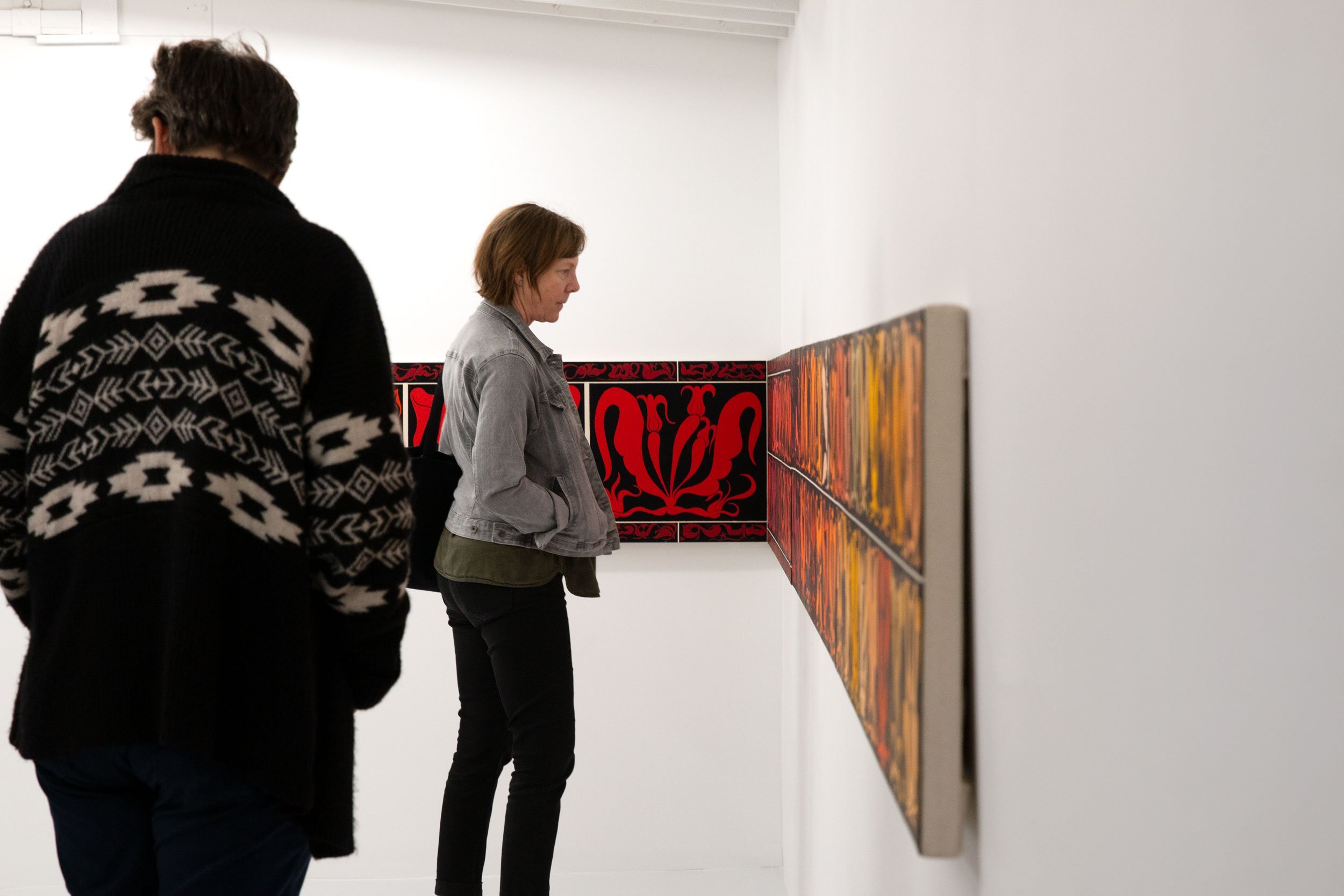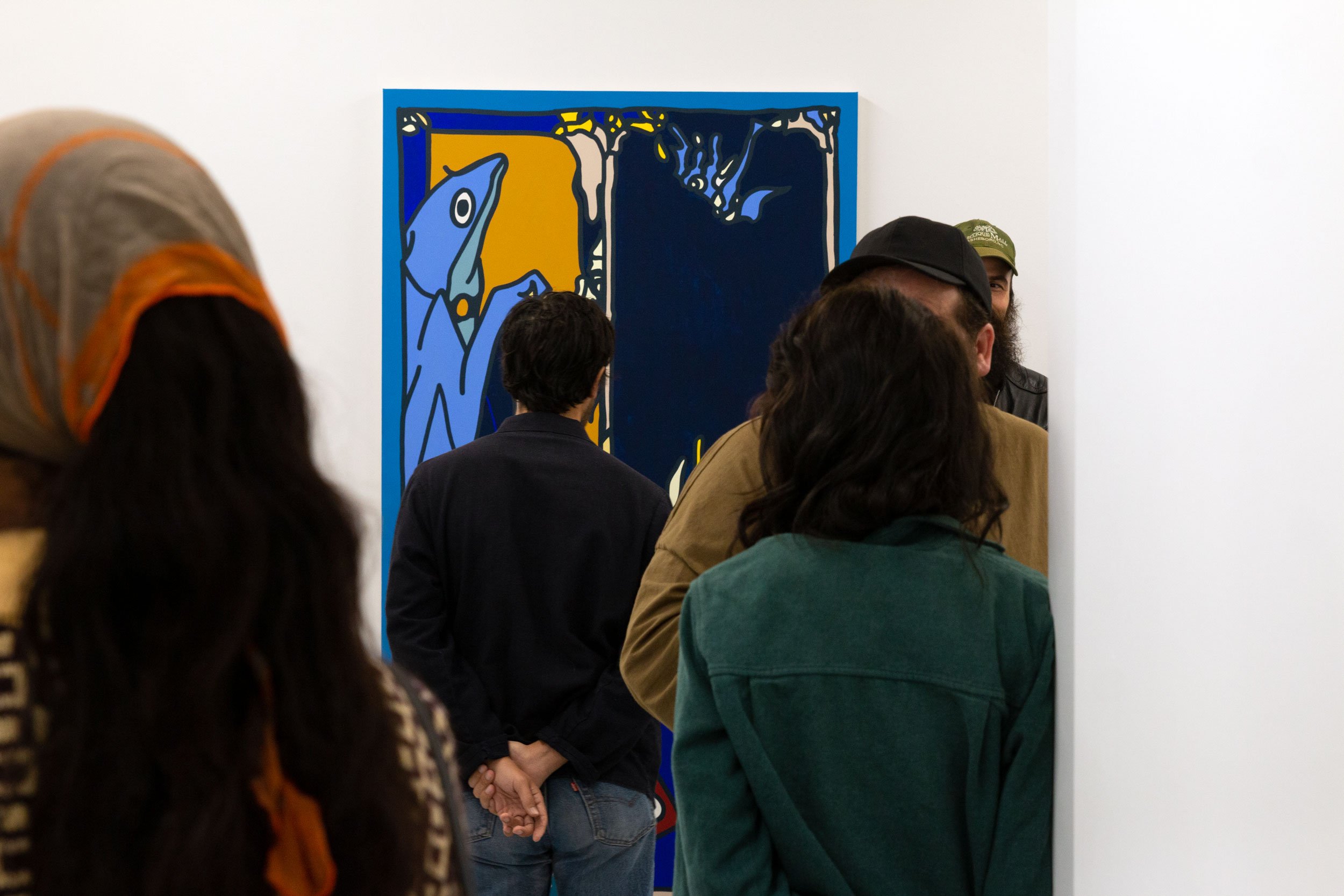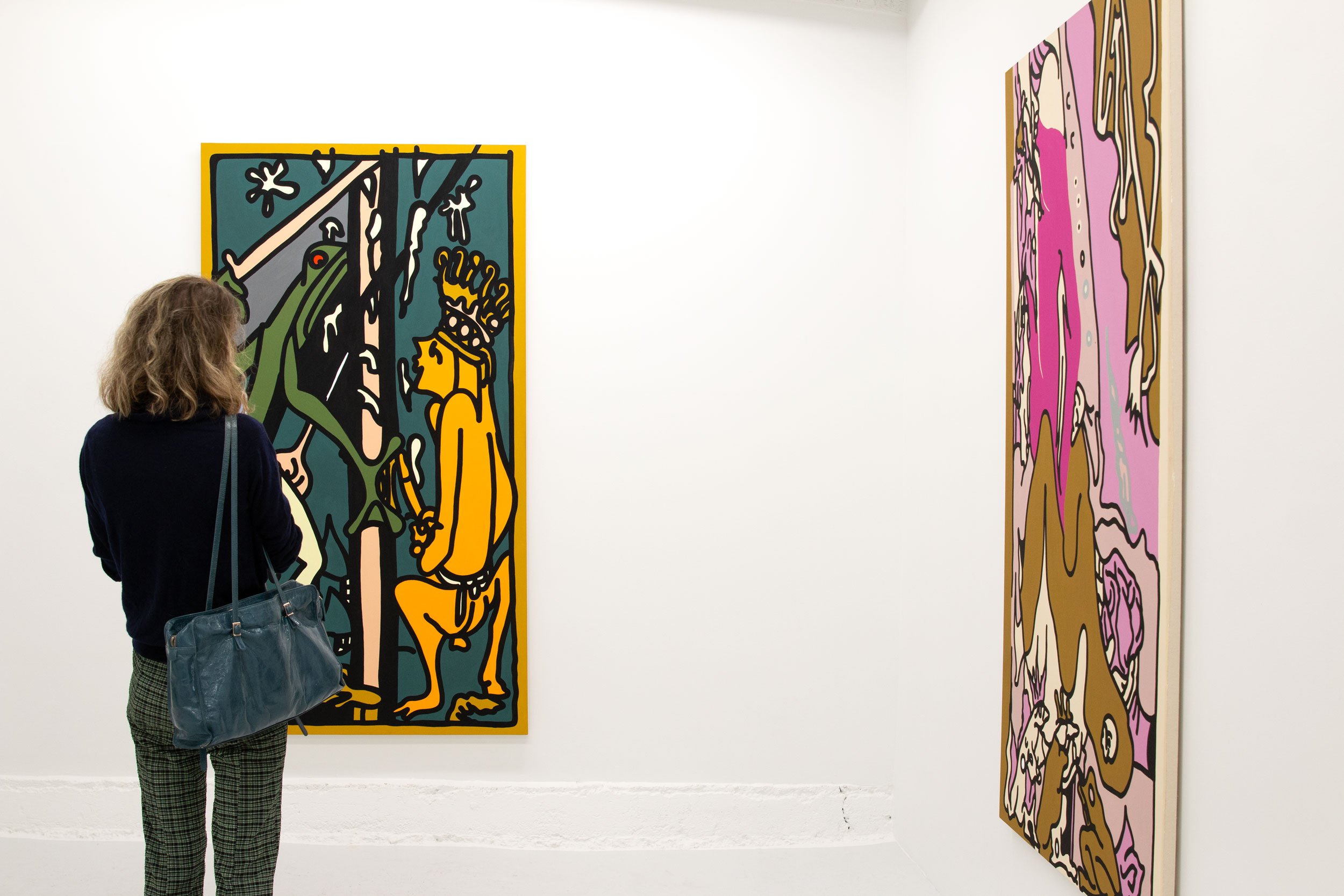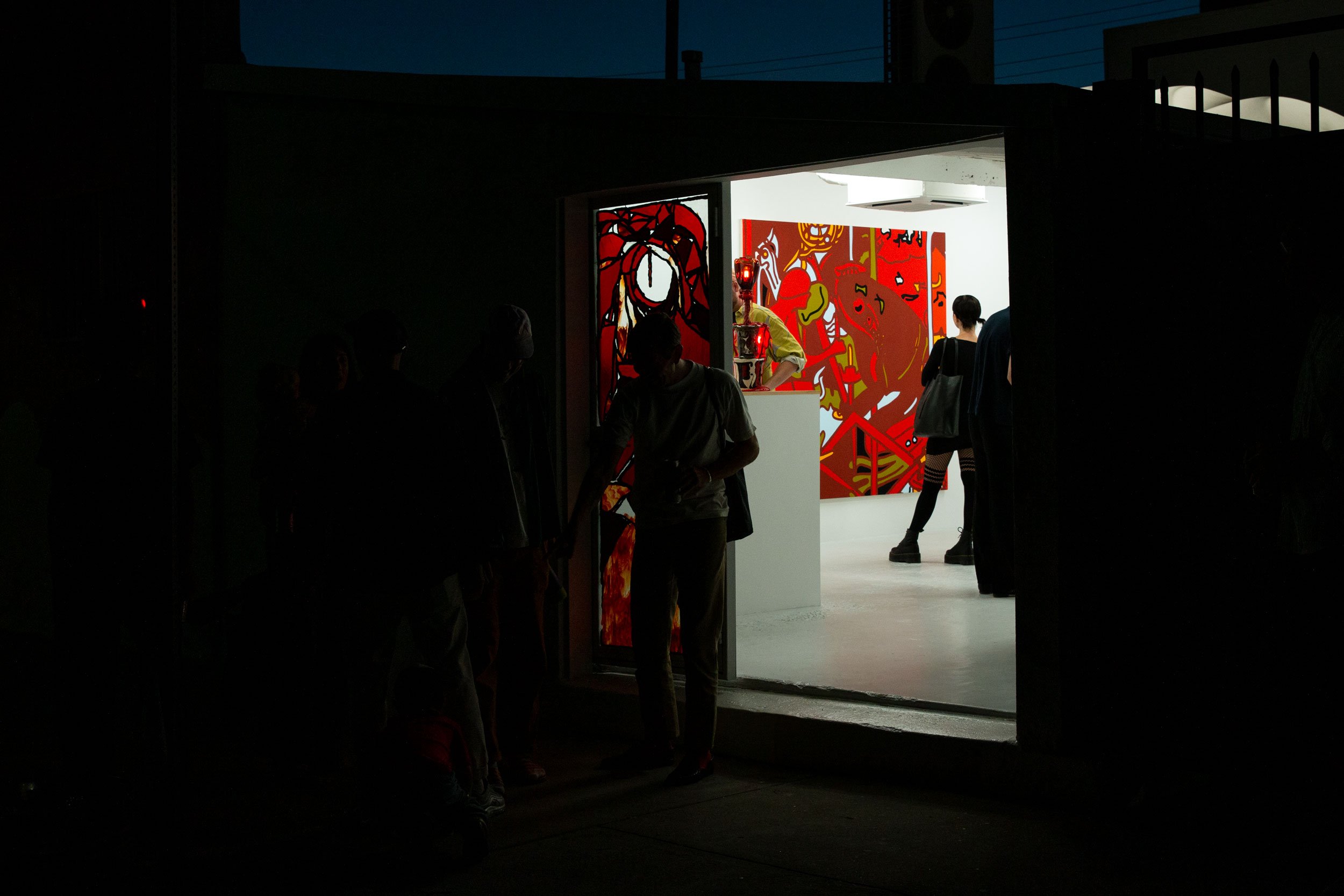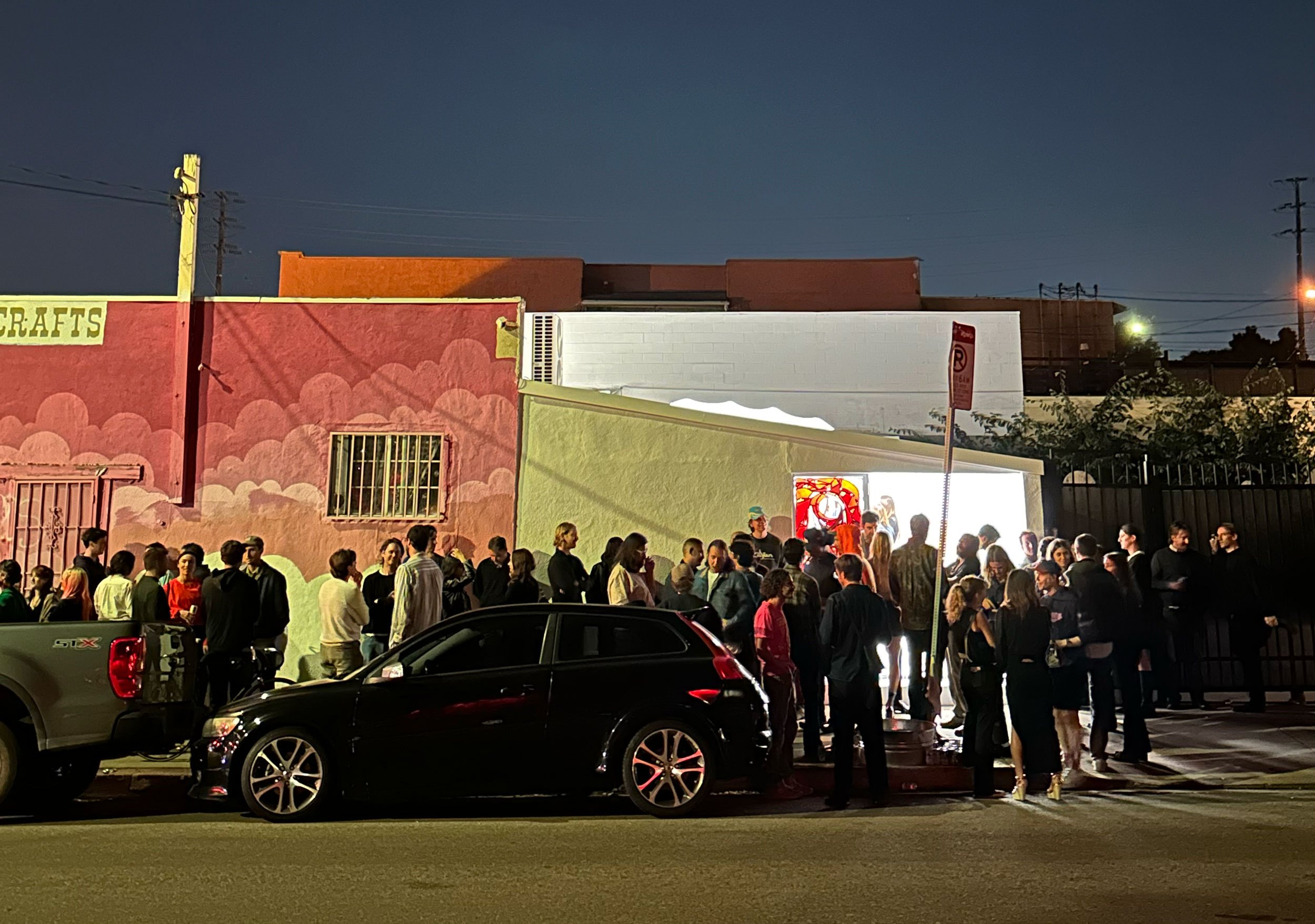Chris Lux Incense
Chris Lux
Incense
Opening Reception: Friday, October 13th, 6 – 9 pm
Exhibition Dates: October 13th – November 18th, 2023
Installation View | Incense
GGLA is proud to present Incense, a solo exhibition by Los Angeles based artist Chris Lux opening Friday, October 13th with a reception from 6–9PM. In new canvases, Lux builds a saturated world that feels both enveloping in its strange unfamiliarity and deeply rooted in art history.
THE BATTLE, 76 x 64 1/2 in, Flashe on Canvas, 2023
4 RED POPPIES, 18 x 72 in, Flashe on Canvas, 2023
16 RED POPPIES, 18 x 80 in, Flashe on Canvas, 2023
16 ORANGE POPPIES, 18 x 80 in, Flashe on Canvas, 2023
16 YELLOW POPPIES, 18 x 80 in, Flashe on Canvas, 2023
Installation View | Incense
STAIN GLASS, 79 x 38 1/2 in, Flashe on Canvas, 2023
THE KISS, 75 x 41 in, Flashe on Canvas, 2023
ADAM FROG, EVE FROG, 75 x 41 in, Flashe on Canvas, 2023
BANISHED “FOR BAD BEHAVIOR”, 75 x 41 in, Flashe on Canvas, 2023
DETHROWNED, 72 x 40 in, Flashe on Canvas, 2023
Untitled, 75 x 27 in, Stained glass and epoxy, 2023

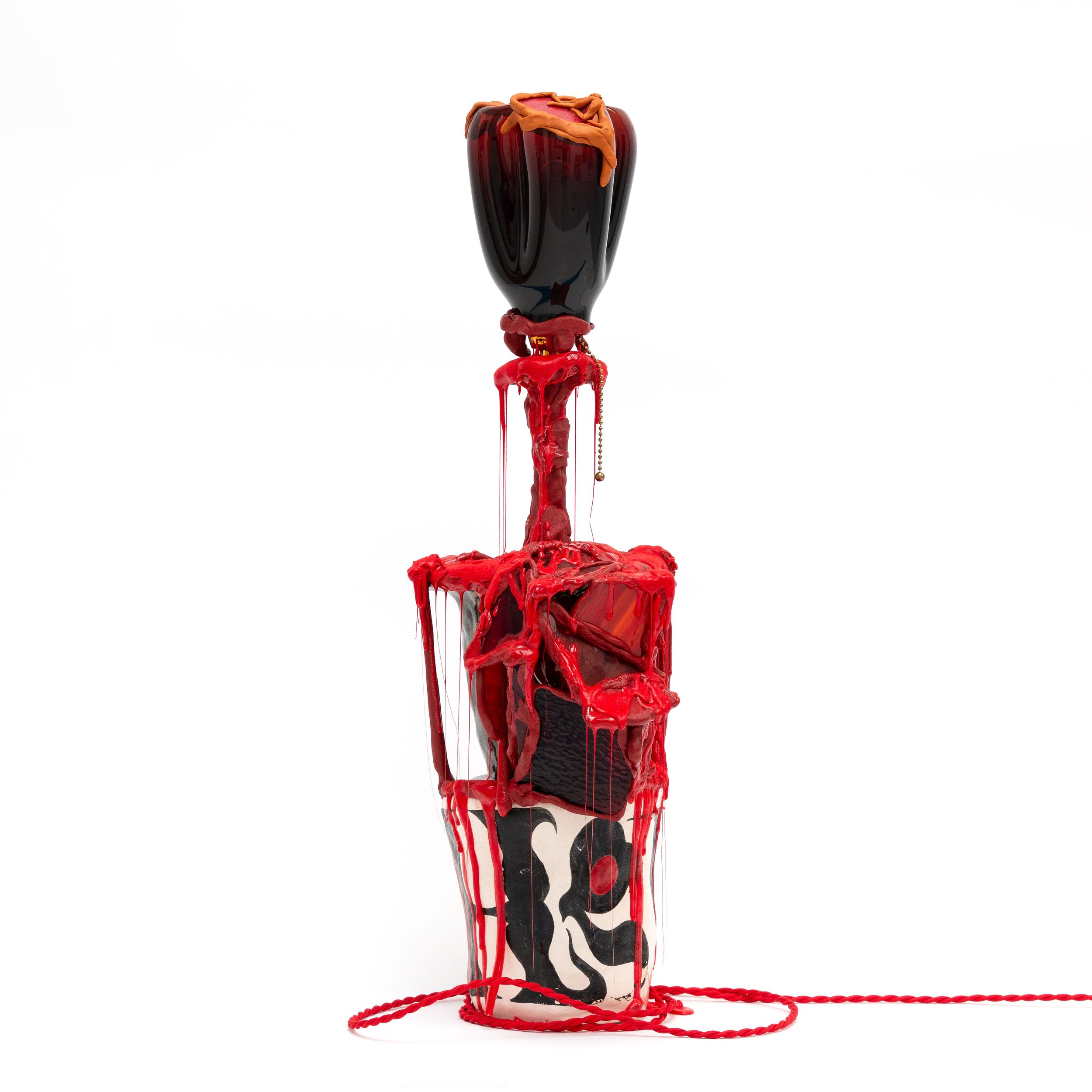
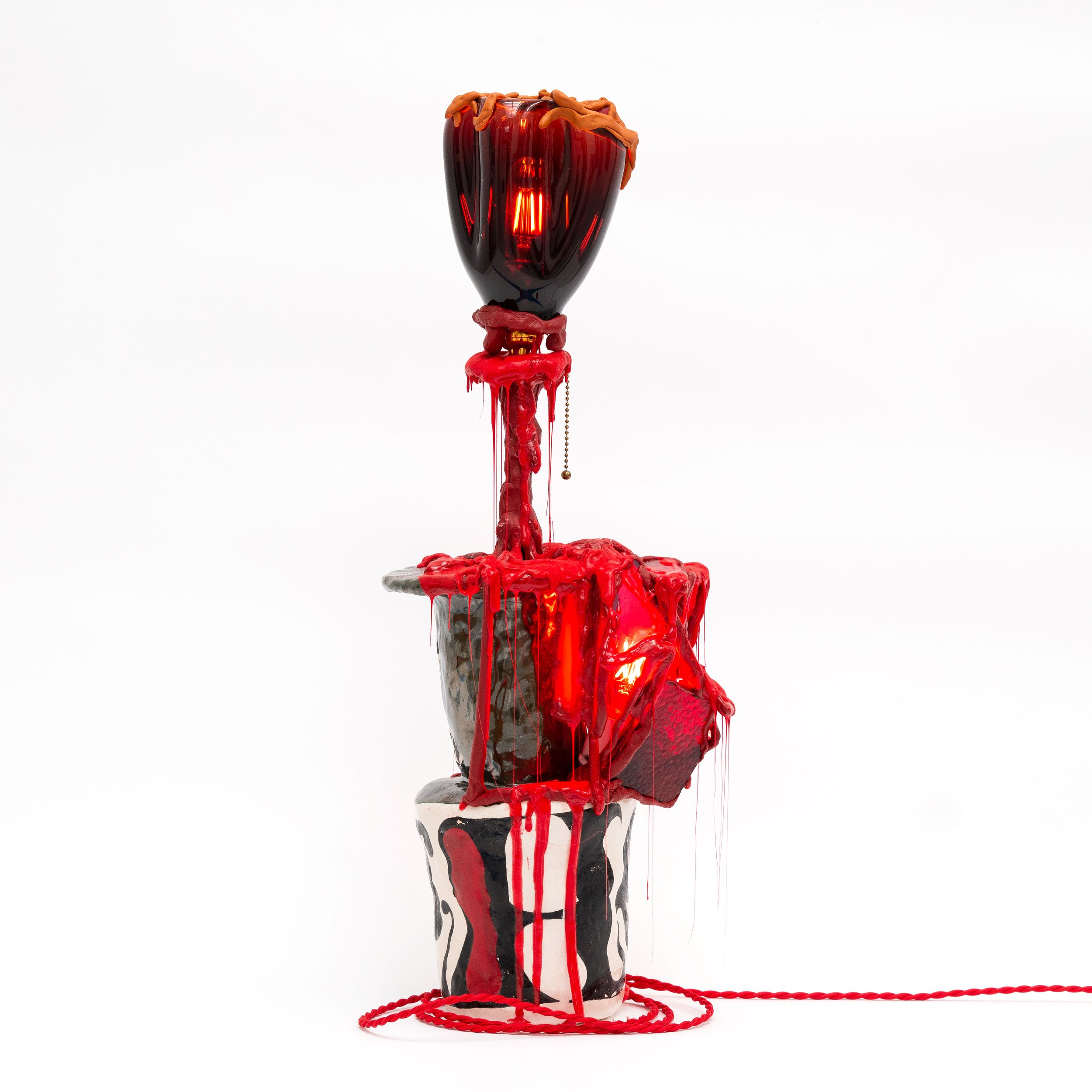


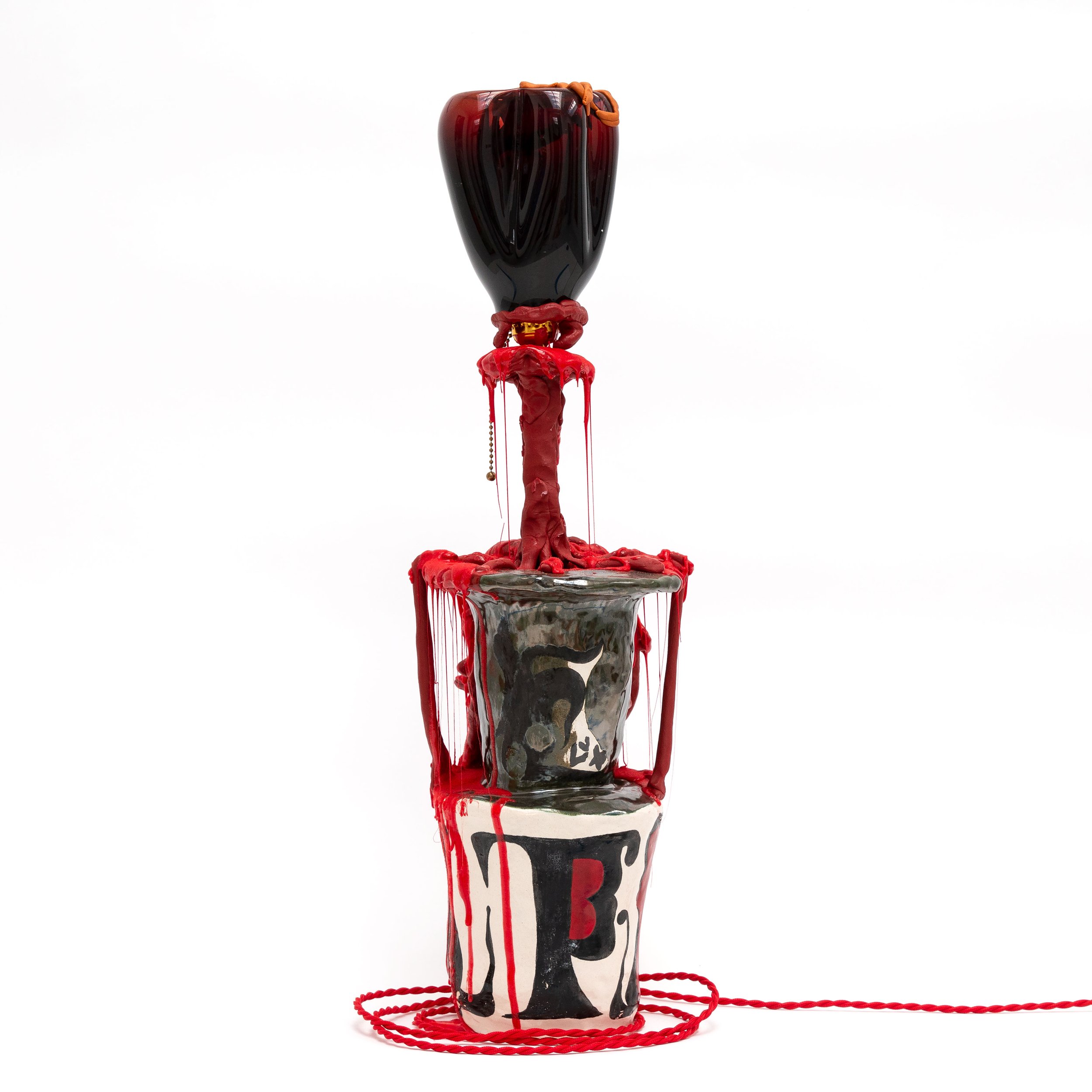
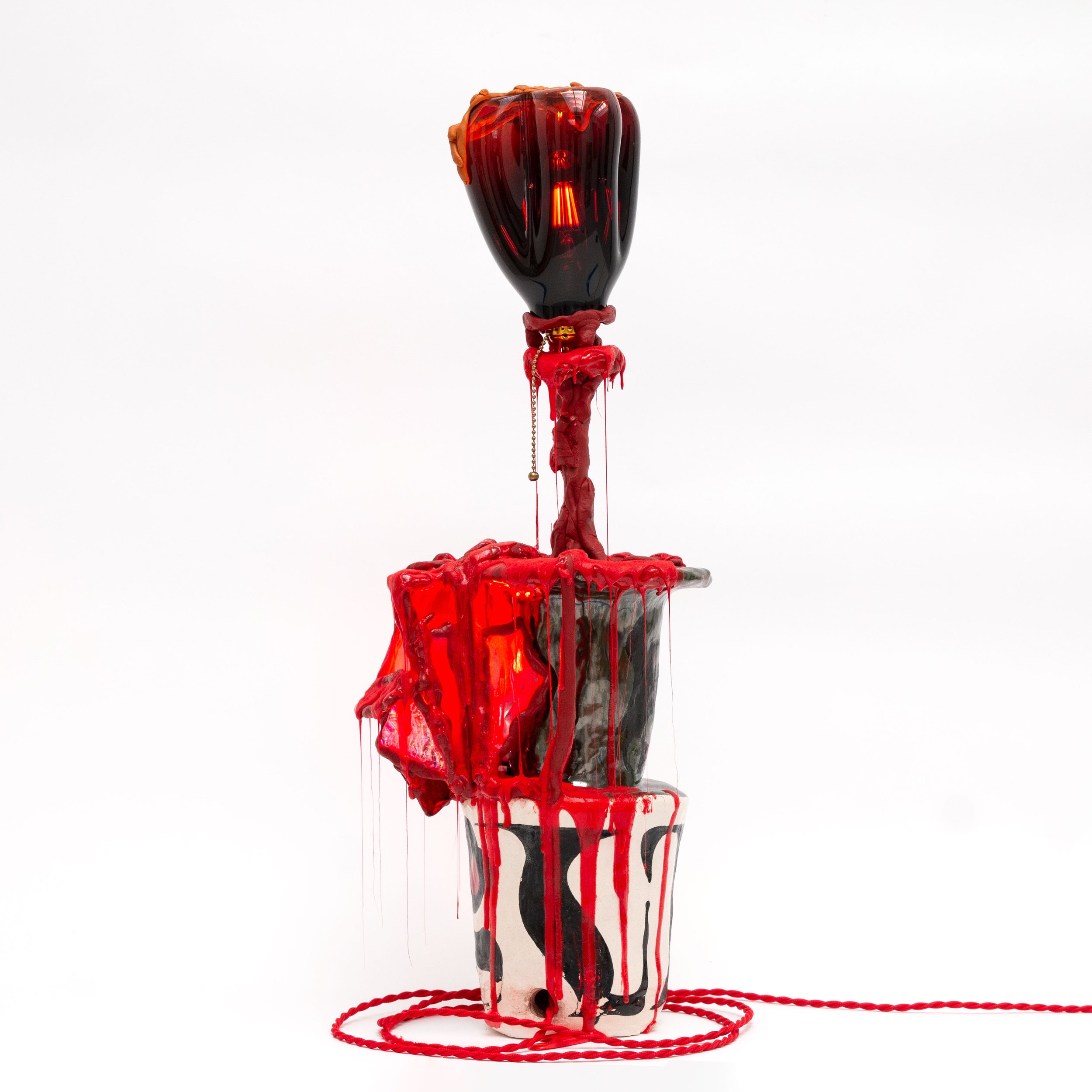
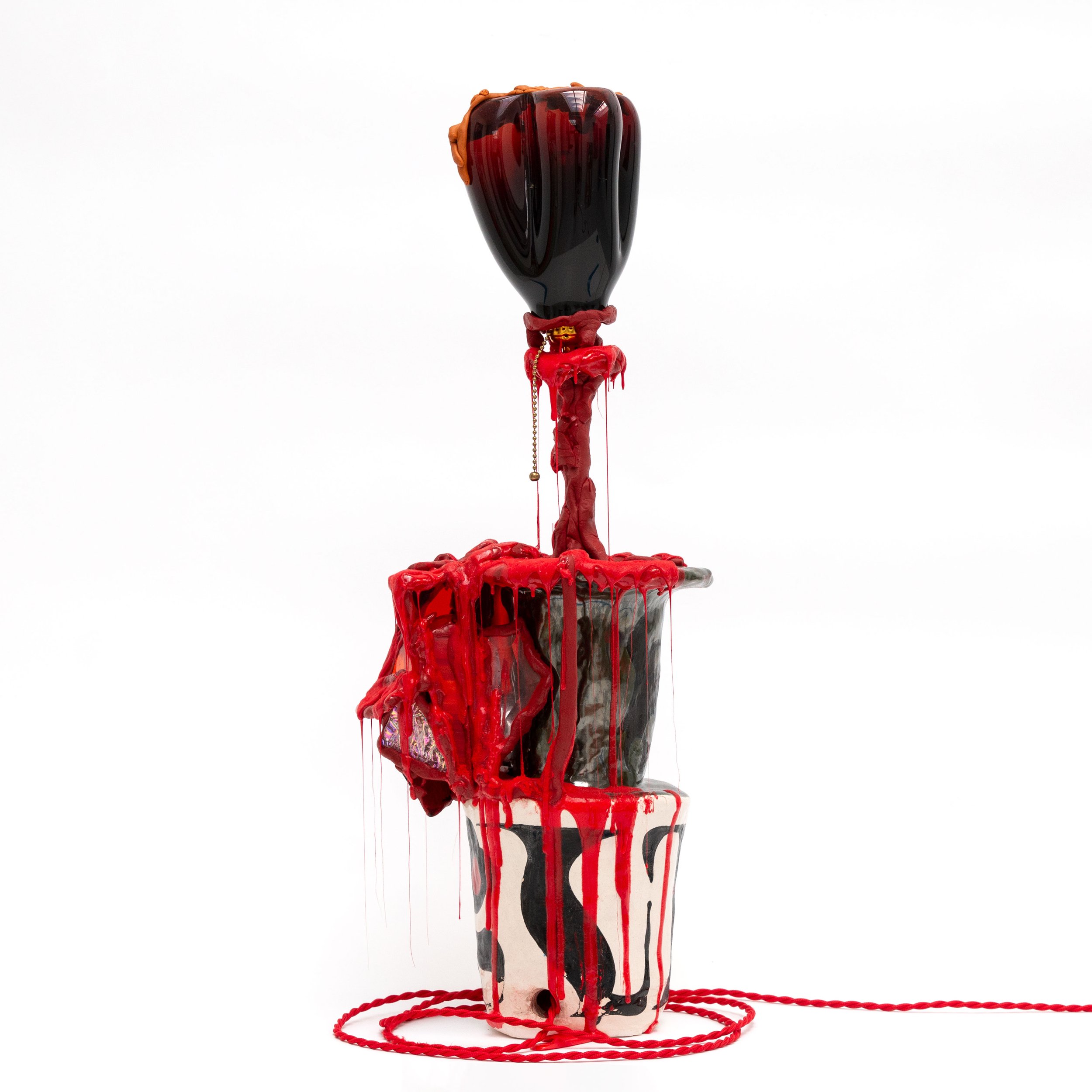
X LAMP, 27.5 x 12 x 10 in, Glazed ceramic, hand-blown glass, epoxy, flocking, electrical cord, lightbulb, 2023
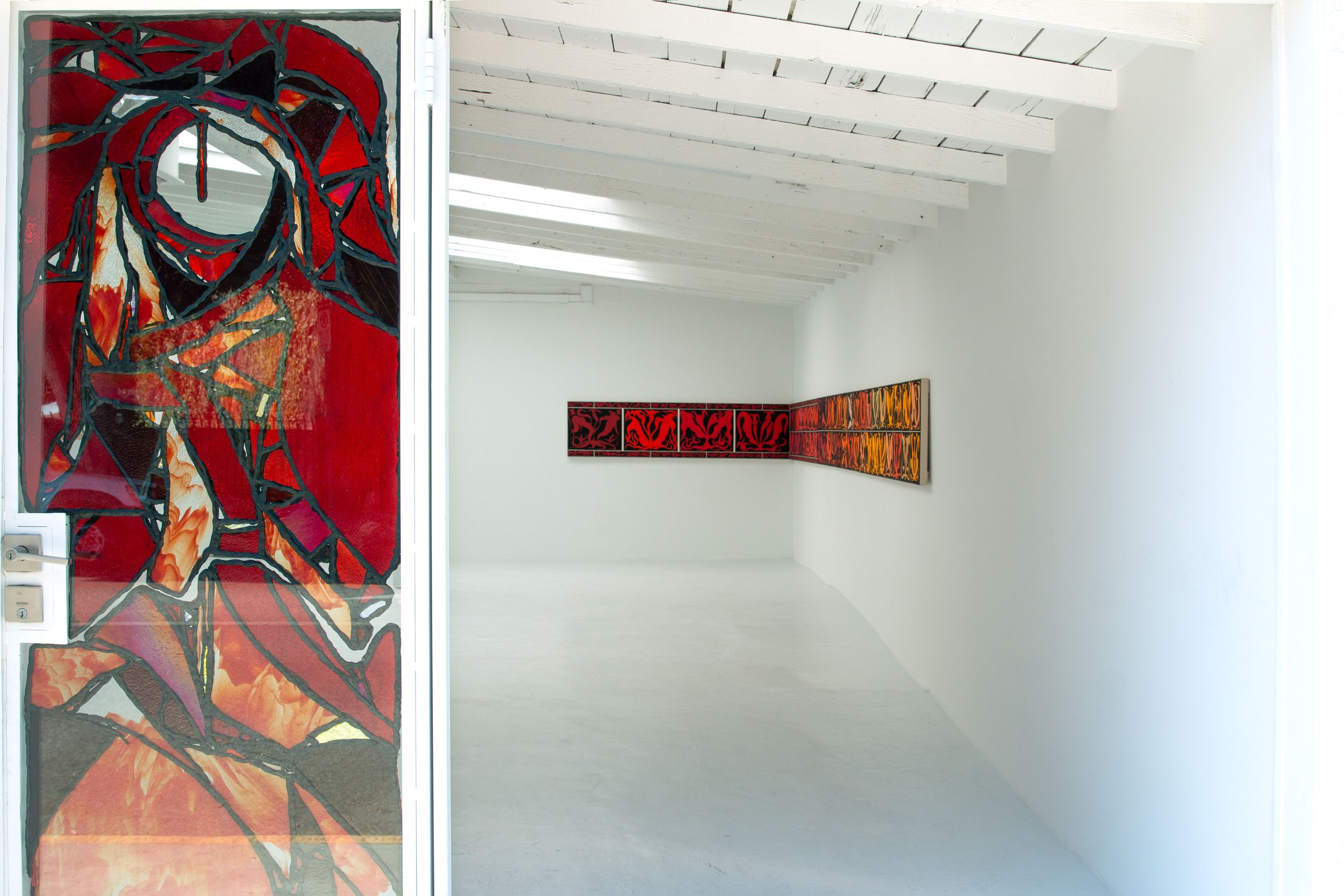
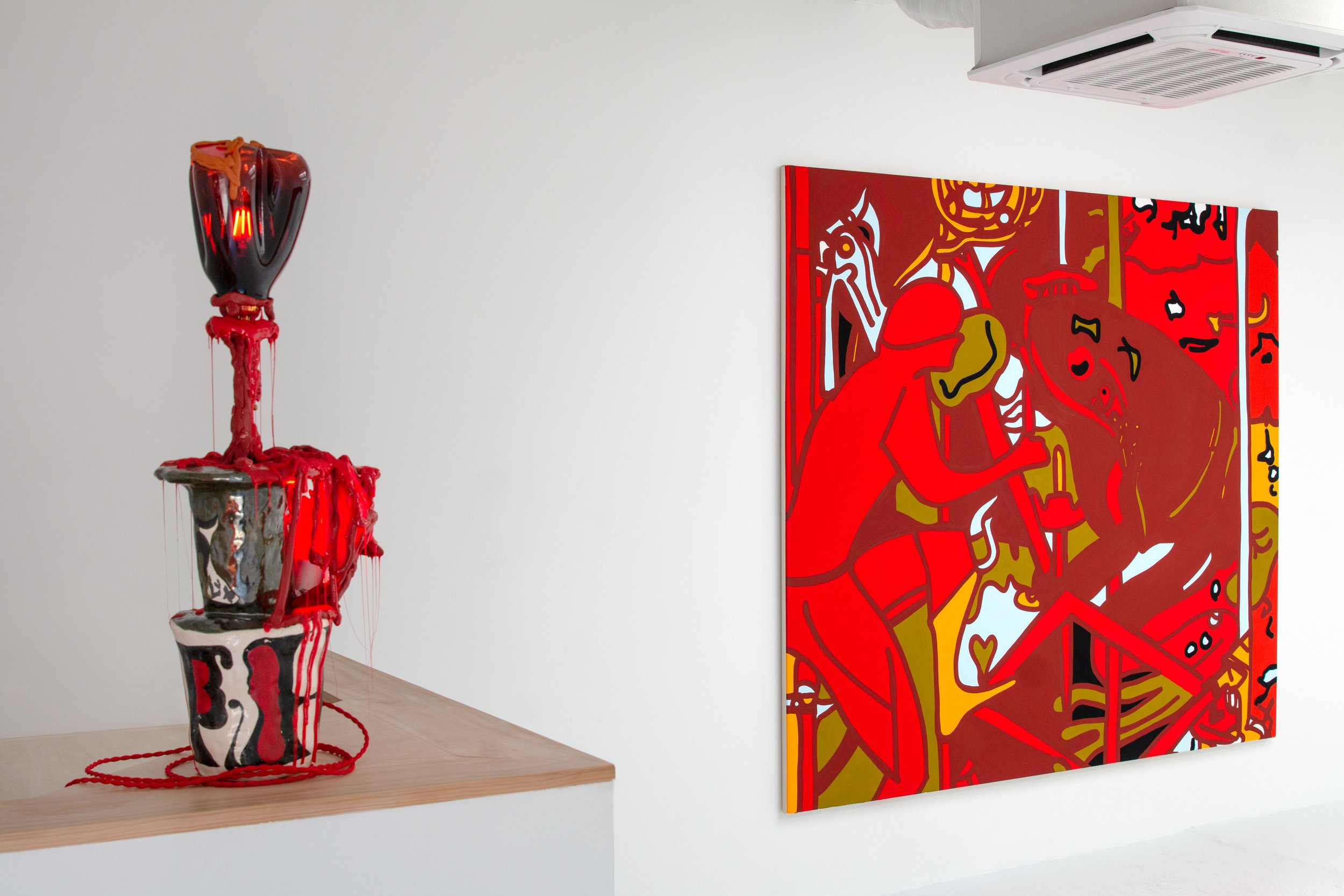
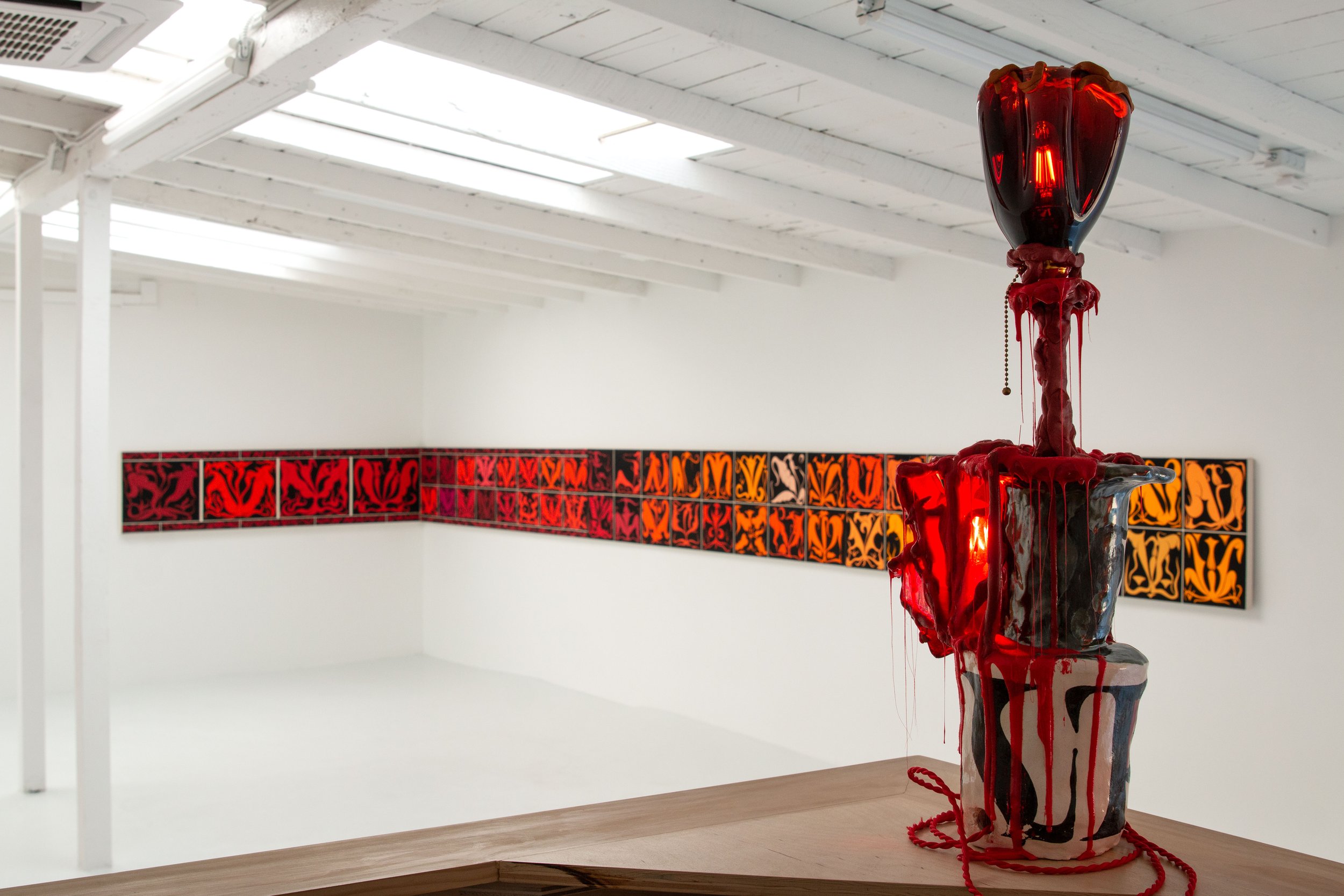
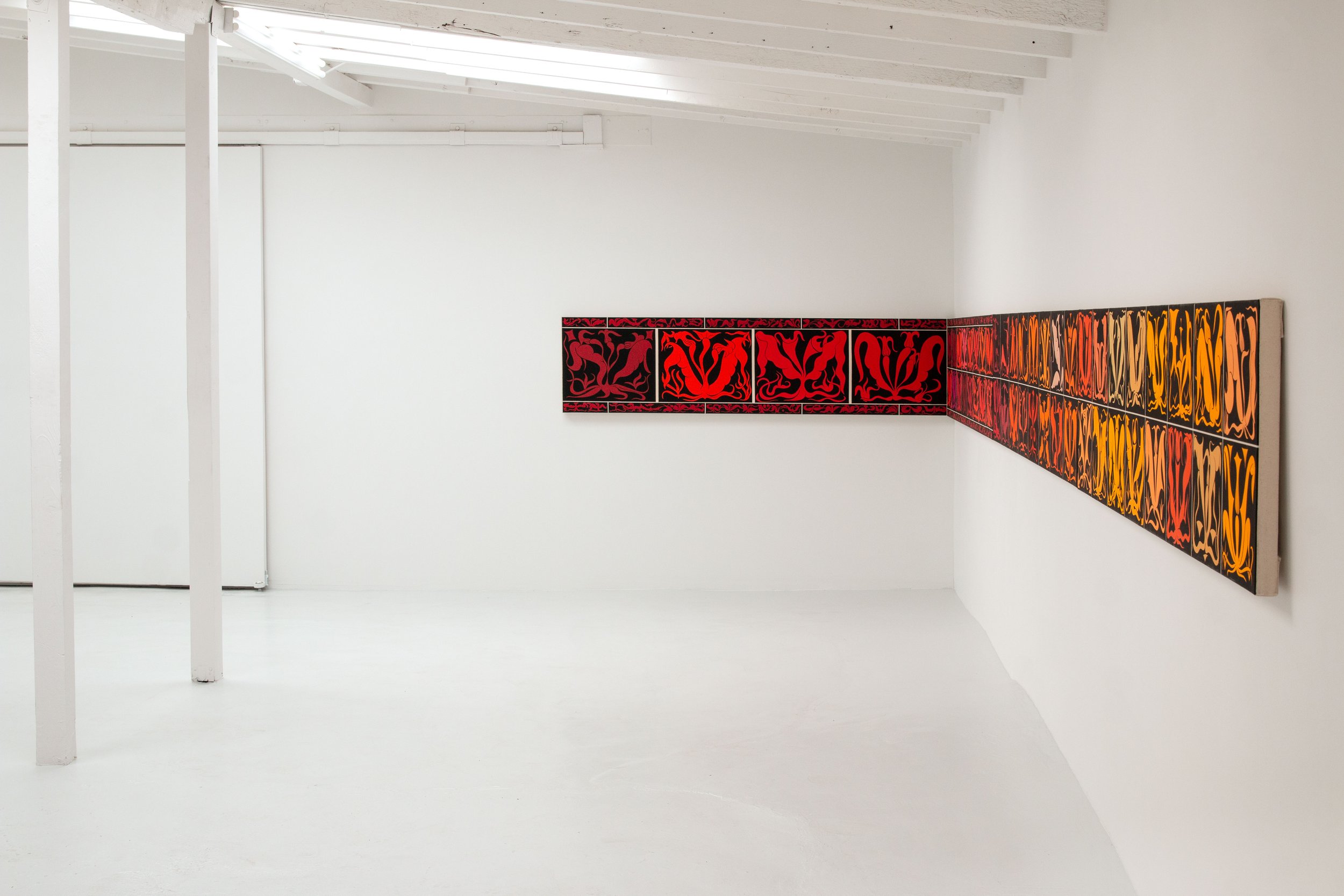

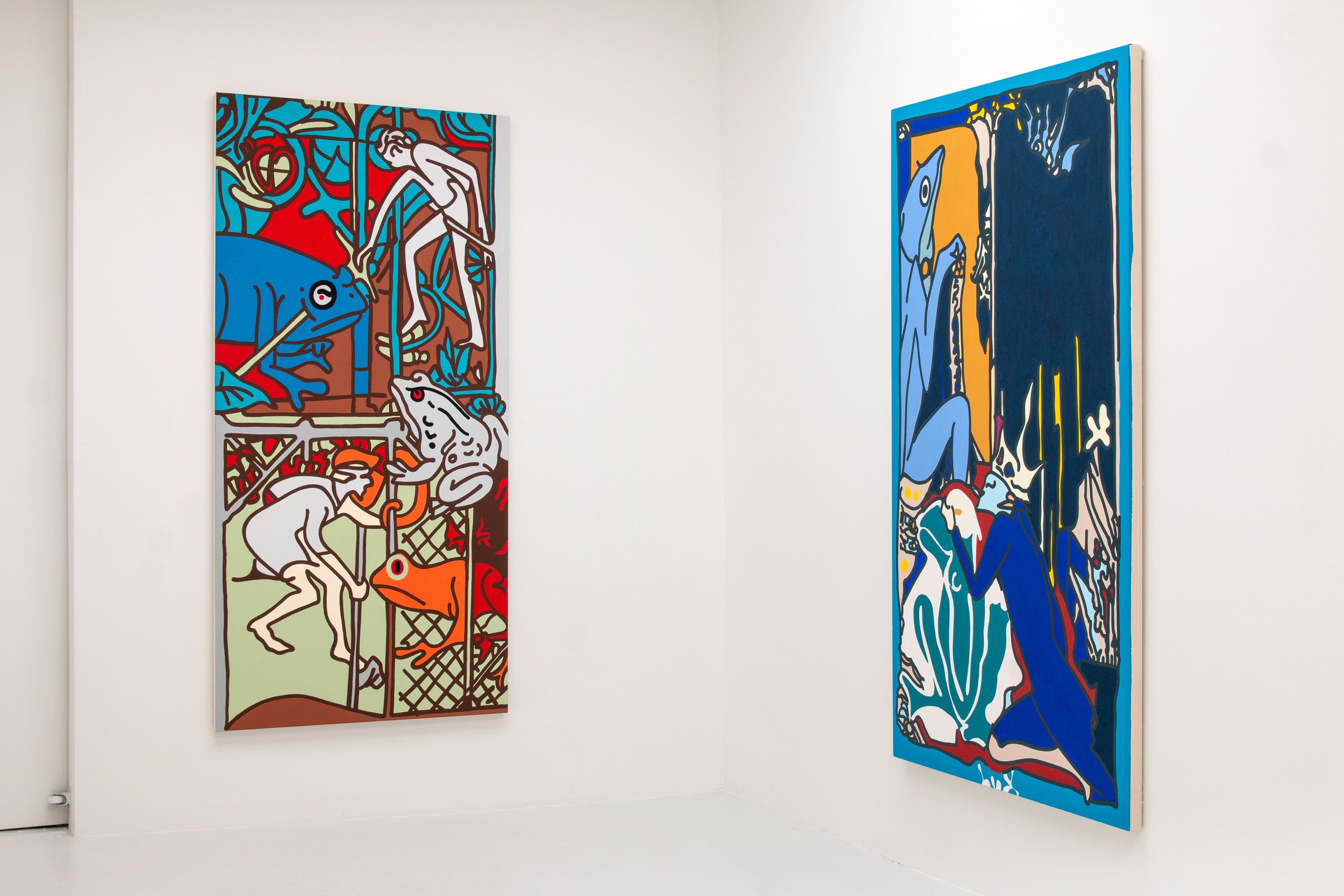
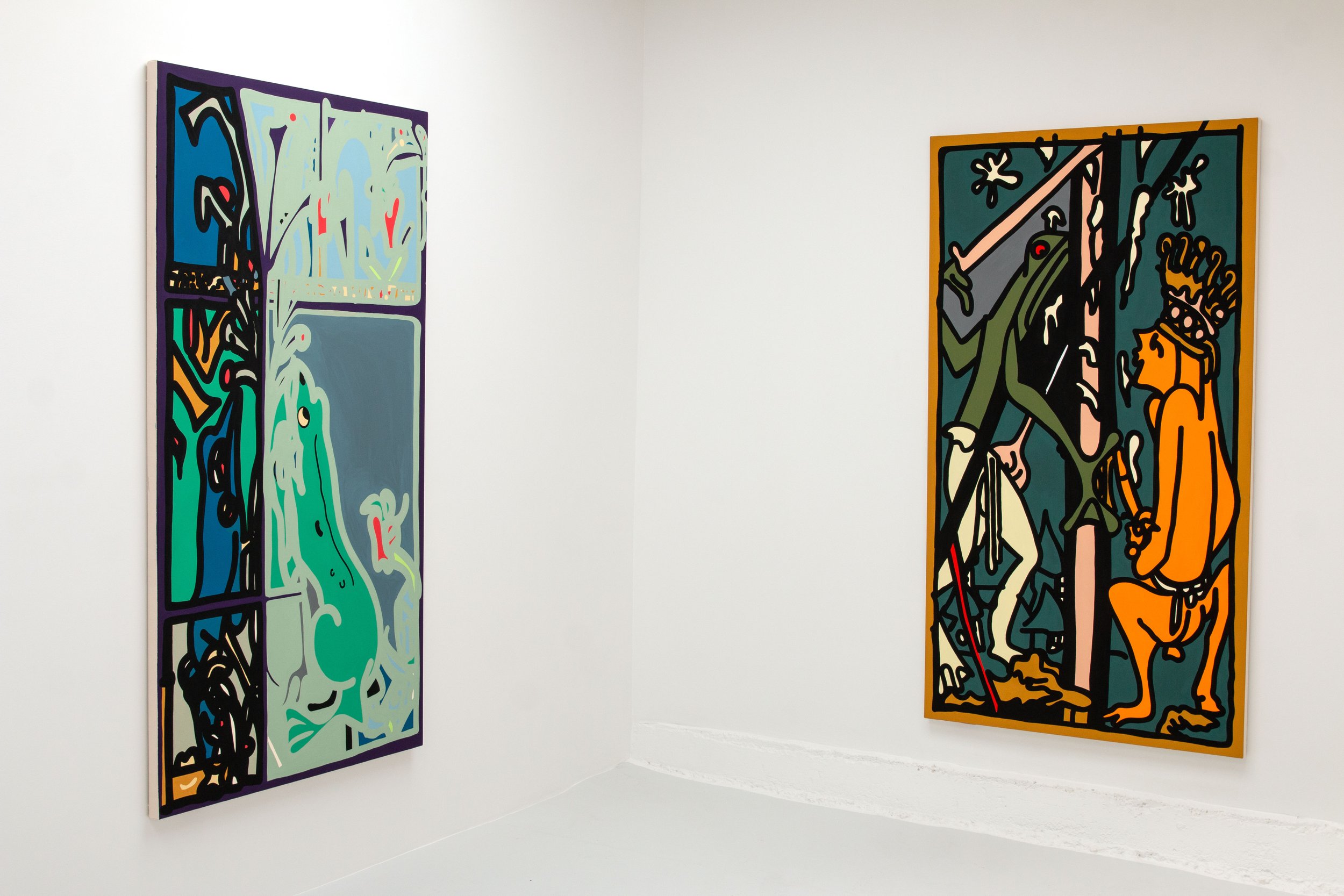

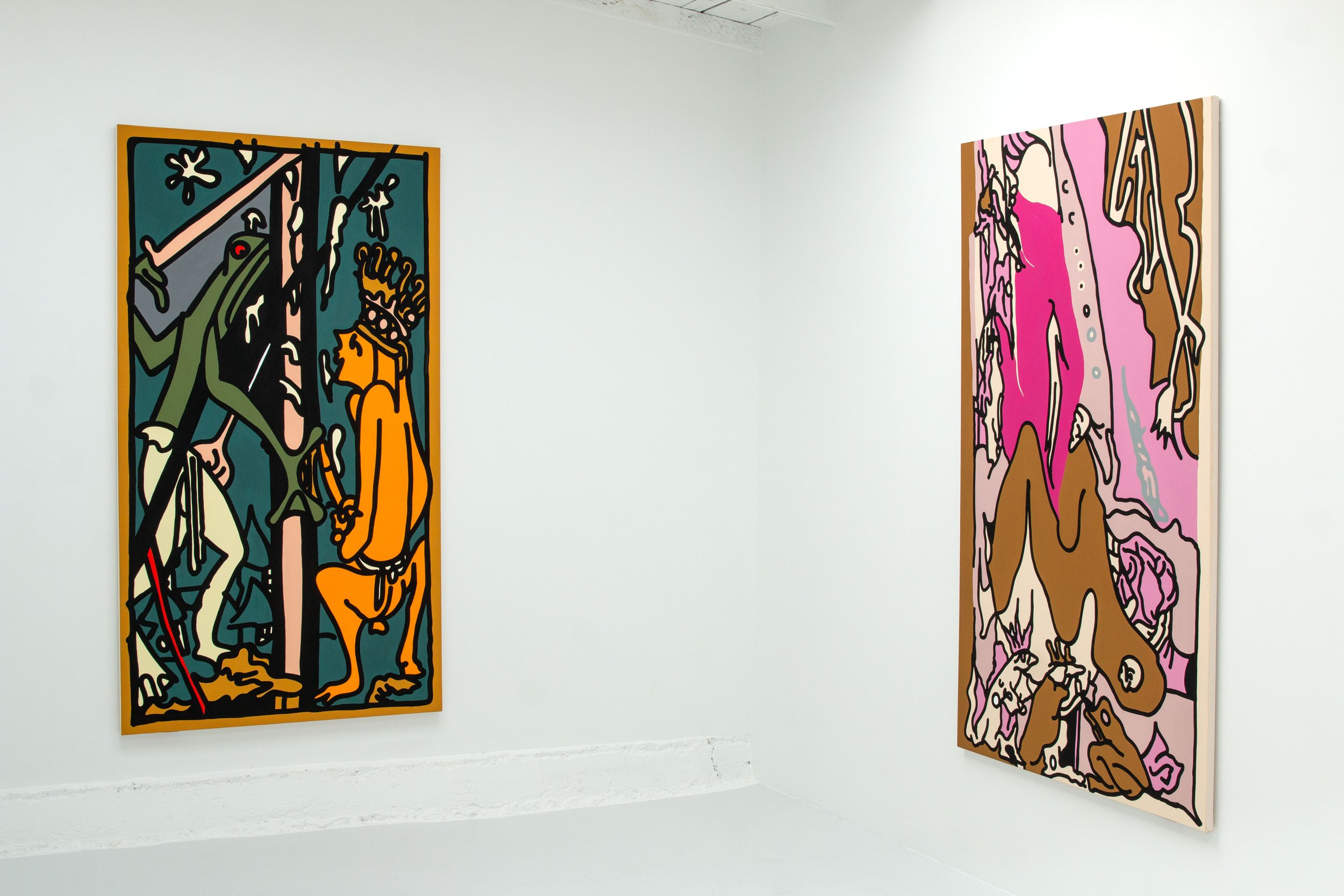
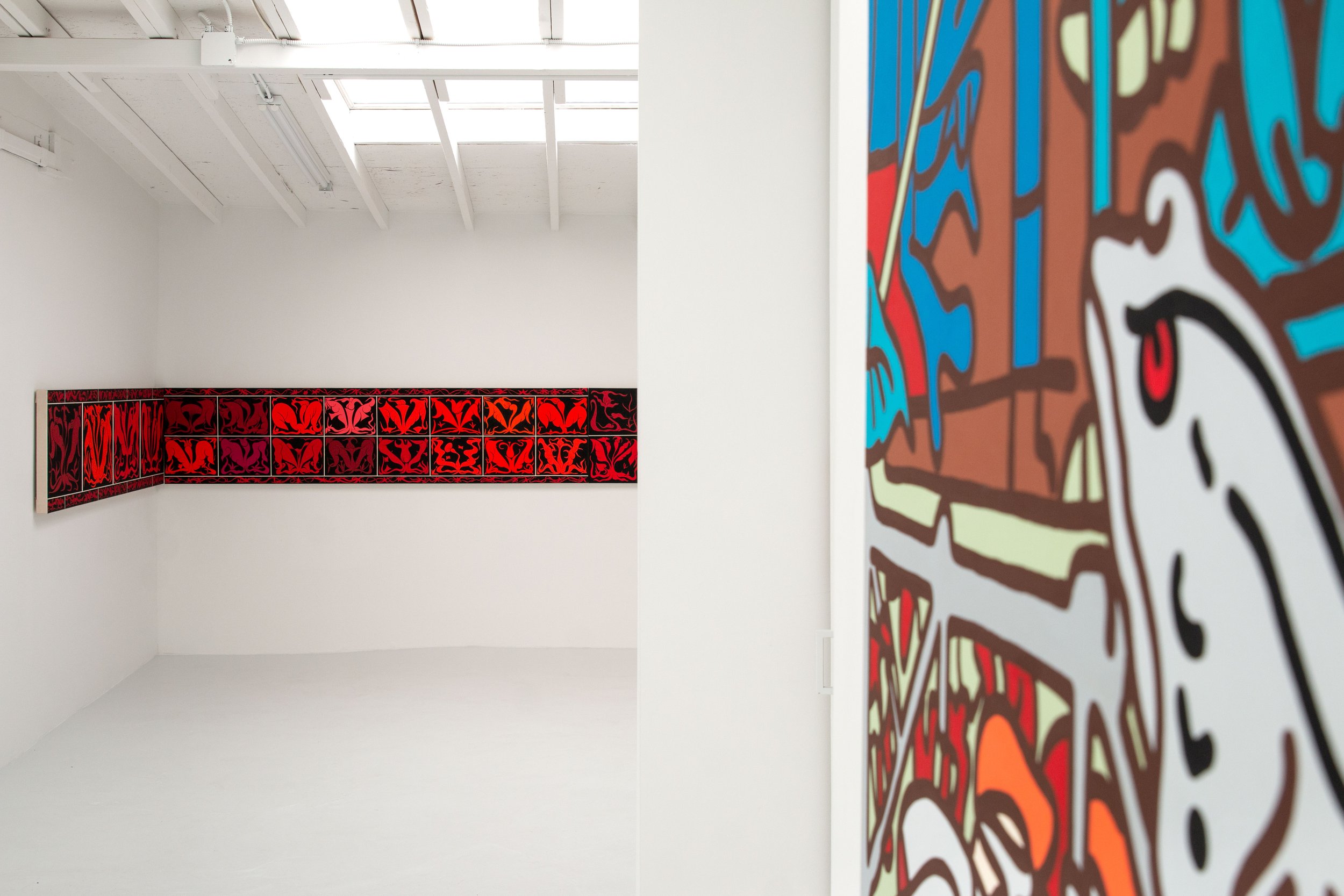
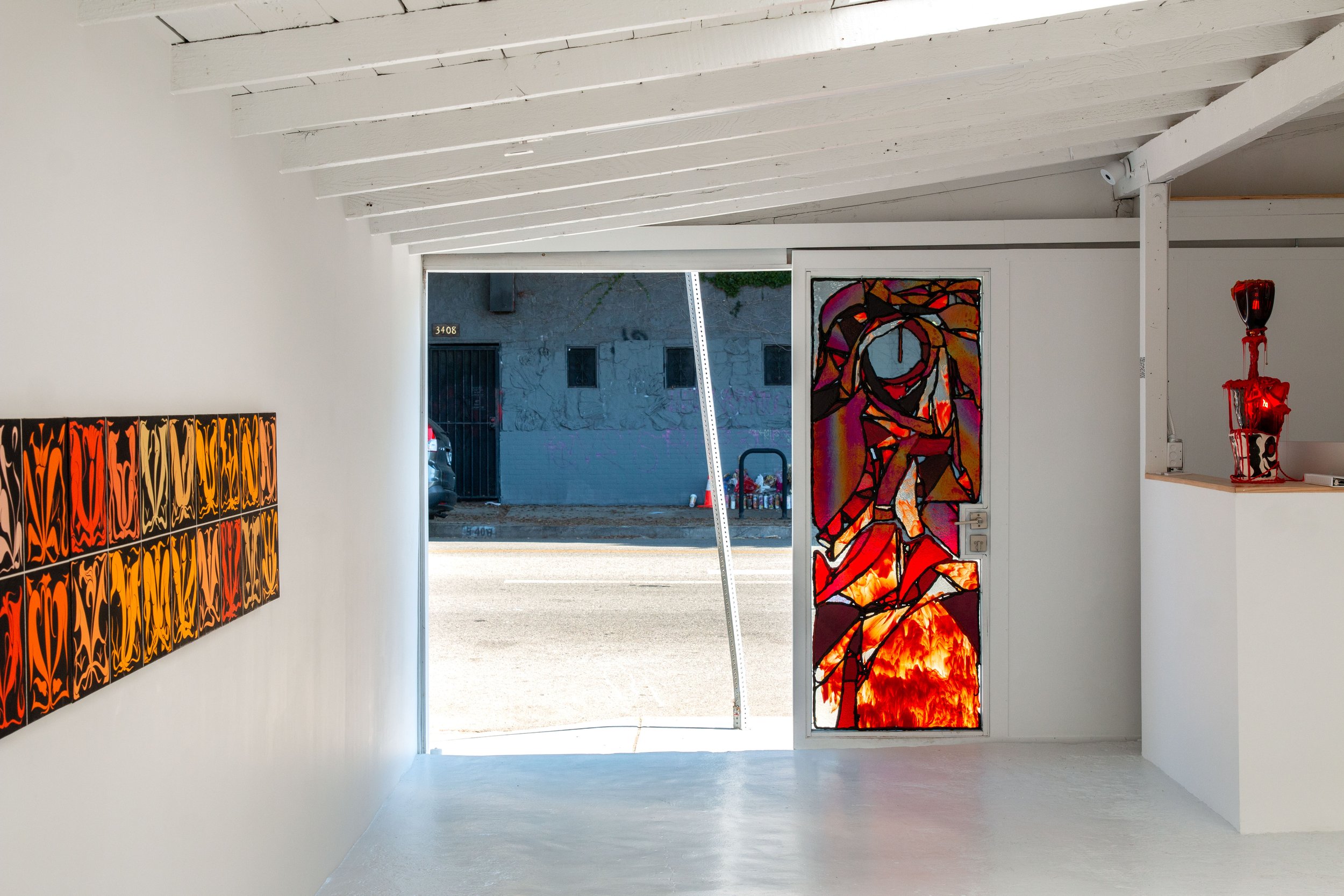

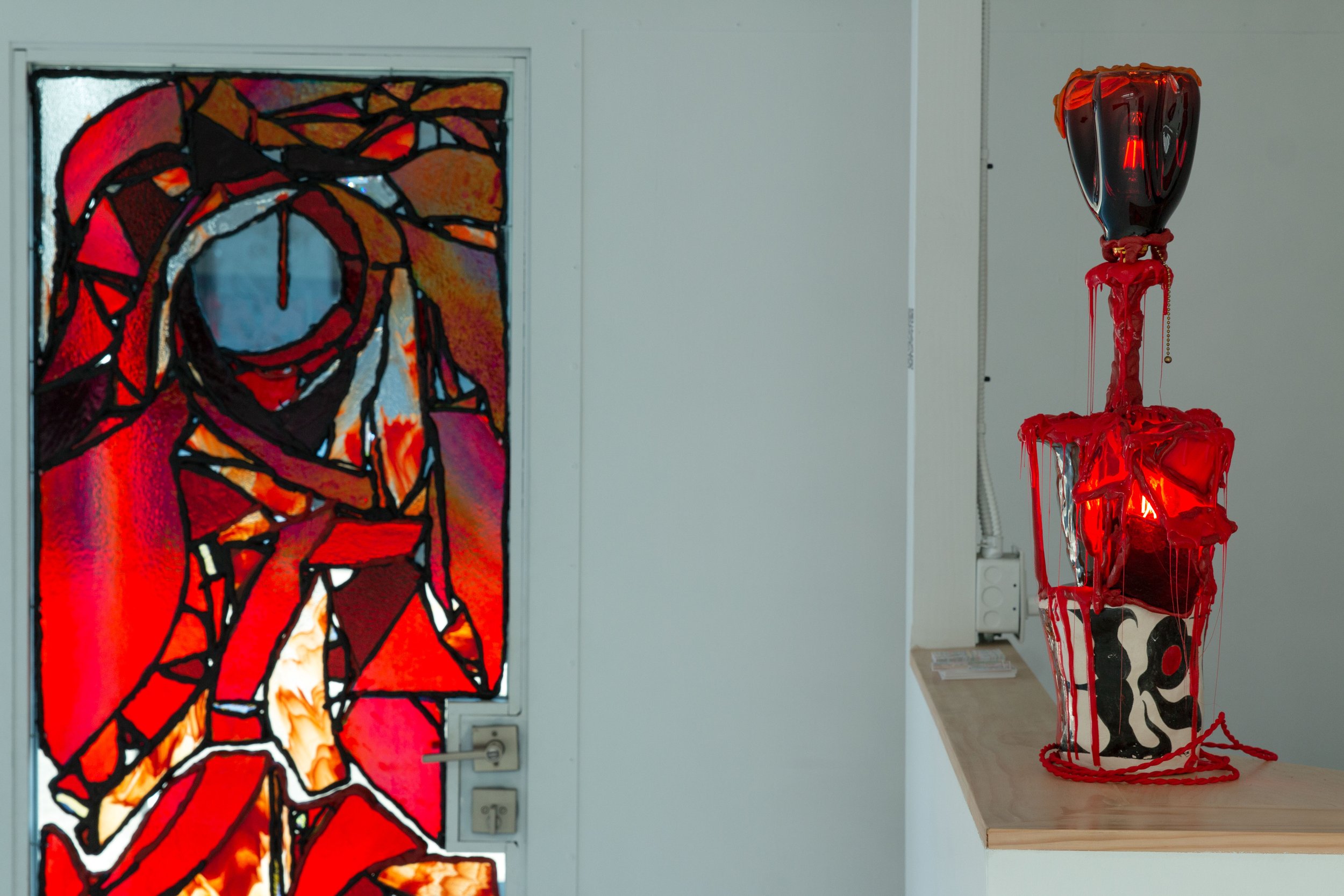
Installation View | Incense
With a suite of paintings realized in ultra-flat Flashe vinyl paint, Lux crafts a loose narrative of interlocking human and frog protagonists in a dance of cooperation, adoration and conflict, speaking to our complex and fraught relationship with the natural world. Within human history and popular culture, frogs represent everything from fertility to liaisons of the underworld. The Egyptians worshiped the frog-goddess Heqet who was associated with the Nile’s flooding and thereby the bringing of new life and abundance. The Bible depicted frogs as a source of punishment as the second of ten plagues levied against the Pharaoh and his people. Through medieval times the frog became associated with witchcraft and potion making, and more modern fairytales feature princes and kings turned into frogs only to be transfigured back into human form through an act of love. Lux’s works embrace the frog in all its rich symbolic history, yet the paintings within Incense don’t feel as if they’re inherently tied to any strict narrative structure, just as they feel connected but not indebted to art history. Instead, Lux’s handling of rich color, loose form and beautiful figuration presents a tapestry of interactions between human characters and frogs, painting a series of relationships that at times feel symbiotic and at others violent and antagonistic.
In the front gallery, the viewer is met with a wide horizontal strip of paintings, each wider than they are tall, hung end to end creating a running installation that curls around the gallery’s back wall and right wall. While the larger works all feature largely recognizable figures, this strip of paintings portray forms that are further obscured hovering somewhere between abstraction and figuration; vegetal and corporeal, all depicted in rotating hues of two colors, a warmer shade of orange, yellow or red in the foreground outlined in calligraphic deep black marks that blend into the background.
Through the combination of Lux’s boldly confident linework or the application of a single color, coupled with the loosely allegorical subject matter, the works radiate much like a stained glass window might, lending a cathedral-esque quality to the gallery space. However while stained glass serves as a dominant pictorial means to relate biblical stories, Lux’s works revel in their own open ended associations with art history; and in particular make reference to Viennese woodblock prints of the 1900’s, the spirit and colors of Fauvism, and the immediacy of contemporary graffiti. In Incense, Lux provides a generous framework through which the viewer is invited to weave their own references and narrative takeaways, or simply pay witness to the effortless beauty that the artist imbues within each composition.

